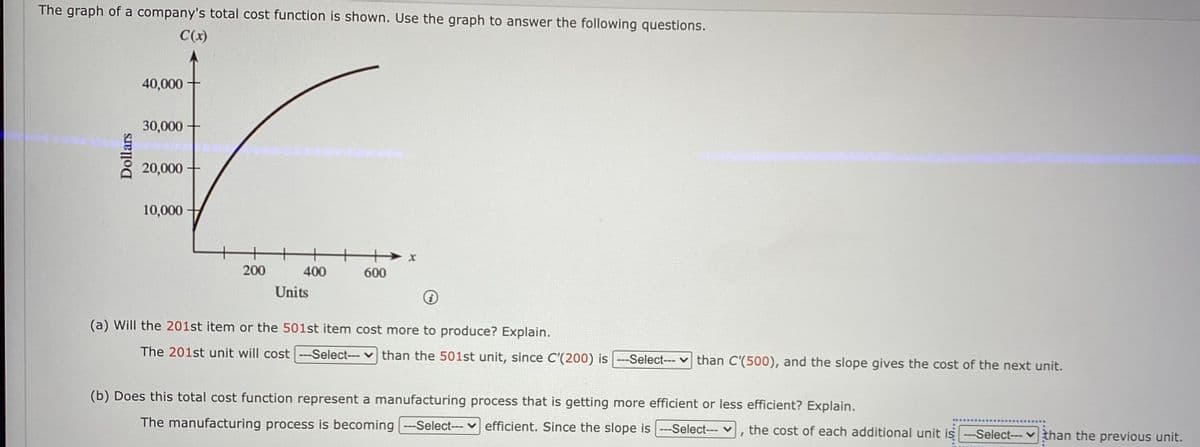The graph of a company's total cost function is shown. Use the graph to answer the following questions. C(x) 40,000 + 30,000 + 20,000- 10,000 - 200 400 600 Units (a) Will the 201st item or the 501st item cost more to produce? Explain. The 201st unit will cost -Select- v than the 501st unit, since C'(200) is -Select-- v than C'(500), and the slope gives the cost of the next unit. (b) Does this total cost function represent a manufacturing process that is getting more efficient or less efficient? Explain. The manufacturing process is becoming -Select-v efficient. Since the slope is --Select- v, the cost of each additional unit is -Select-vthan the previous unit. Dollars
Cost-Volume-Profit Analysis
Cost Volume Profit (CVP) analysis is a cost accounting method that analyses the effect of fluctuating cost and volume on the operating profit. Also known as break-even analysis, CVP determines the break-even point for varying volumes of sales and cost structures. This information helps the managers make economic decisions on a short-term basis. CVP analysis is based on many assumptions. Sales price, variable costs, and fixed costs per unit are assumed to be constant. The analysis also assumes that all units produced are sold and costs get impacted due to changes in activities. All costs incurred by the company like administrative, manufacturing, and selling costs are identified as either fixed or variable.
Marginal Costing
Marginal cost is defined as the change in the total cost which takes place when one additional unit of a product is manufactured. The marginal cost is influenced only by the variations which generally occur in the variable costs because the fixed costs remain the same irrespective of the output produced. The concept of marginal cost is used for product pricing when the customers want the lowest possible price for a certain number of orders. There is no accounting entry for marginal cost and it is only used by the management for taking effective decisions.
A.) The 201st unit will cost more/less than the 501st unit, since C'(200) is greater/less than C'(500).
B.) The manufacturing process is becoming more/less efficient. Since the slope is positive/negative/decreasing/increasing, the cost of each additional unit is greater/less than the previous unit.

Trending now
This is a popular solution!
Step by step
Solved in 2 steps









